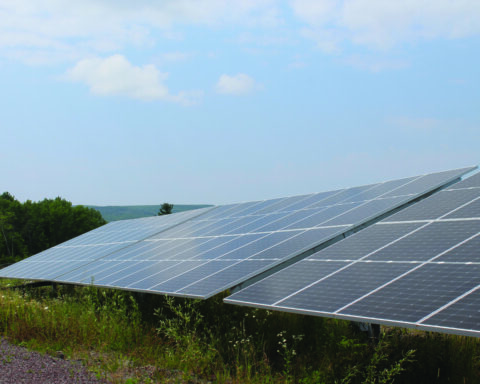With Donald Trump in the driver’s seat rolling back emission regulations, and consumers’ sagging interest in high-priced electric vehicles, U.S. automakers have spent the better part of two years cutting back plans for EV sales and production.
In September, General Motors cut output at its EV plant in Spring Hill, Tennessee, following on the delayed opening of a new truck plant last fall. Last summer, Ford scrapped plans for a big electric SUV and cut EV spending. And this past winter, Stellantis paused manufacturing of some EVs while putting new emphasis on hybrid vehicles.
But from this pit of sagging expectations, one North American automaker is springing back. In August, Ford unveiled its “Universal EV Platform,” a new concept in affordable production that it labelled “a Model T moment,” in a nod to its origin story. Ford’s iconic Model T motor buggy was a breakthrough in mass production and simple design that launched the modern automotive industry – and today’s car-based society – by reducing the cost of the family car from $825 in 1909 to $260 by 1925.
Ford CEO Jim Farley says the novel production process – combining a new, US$3-billion battery plant in Michigan with a $2-billion assembly system in Kentucky – will bring the price of EV pickups and crossover vehicles down to US$30,000, or roughly half the average cost of new EVs today in the United States.
Farley says the breakthrough comes from charging a small, elite innovation team in California – led by Tesla veteran Alan Clarke – to reimagine the way cars are made. “We locked the doors and kept the project secret,” said Ford EV chief Doug Field. “It had permission to question everything.”
The new system replaces an assembly line with an “assembly tree,” on which the front, back and floor of the vehicle will be assembled separately, and then brought together at the end of the line. The vehicles – a midsized pickup at first – will feature 20% fewer parts and a floor that’s actually an economical, 400-volt lithium iron phosphate battery. “Our target is a five-year cost of ownership that will be lower than buying a three-year-old Tesla Model Y, and they are pretty cheap right now,” Field said.
Industry watchers were quick to note that many of Ford’s innovations resemble systems already developed by Tesla and also employed by Chinese competitors. “That was a watershed moment,” Terry Woychowski, a former auto executive, told Yahoo Finance. “Before you can beat somebody, you better catch up with them, so that’s a huge step.”
“We’re only in the second inning of this EV transformation,” Farley told The Detroit News earlier this month. “I don’t take anything for granted about the continuous improvement we have to make.”
But car-buyers continue to be spooked by high prices. A recent survey found that 73% of consumers report holding off from buying a new vehicle for budget reasons. While Ford’s plans for a $30,000 electric pickup might not be affordable enough for many buyers, other carmakers are also rushing to bring entry-level EVs to market: Chevrolet, Jeep and Honda all have sub-$30,000 EVs on the horizon.
Elon Musk, meanwhile, has abandoned his pledge to produce a $25,000 Tesla (the low-priced Model 3 sells for $42,500 in the United States), so critics are granting Ford the win for building North American–made EVs that just may compete with low-cost Chinese automakers.
With files from Mark Mann.
Rick Spence is the editor-at-large at Corporate Knights.
The Weekly Roundup
Get all our stories in one place, every Wednesday at noon EST.







